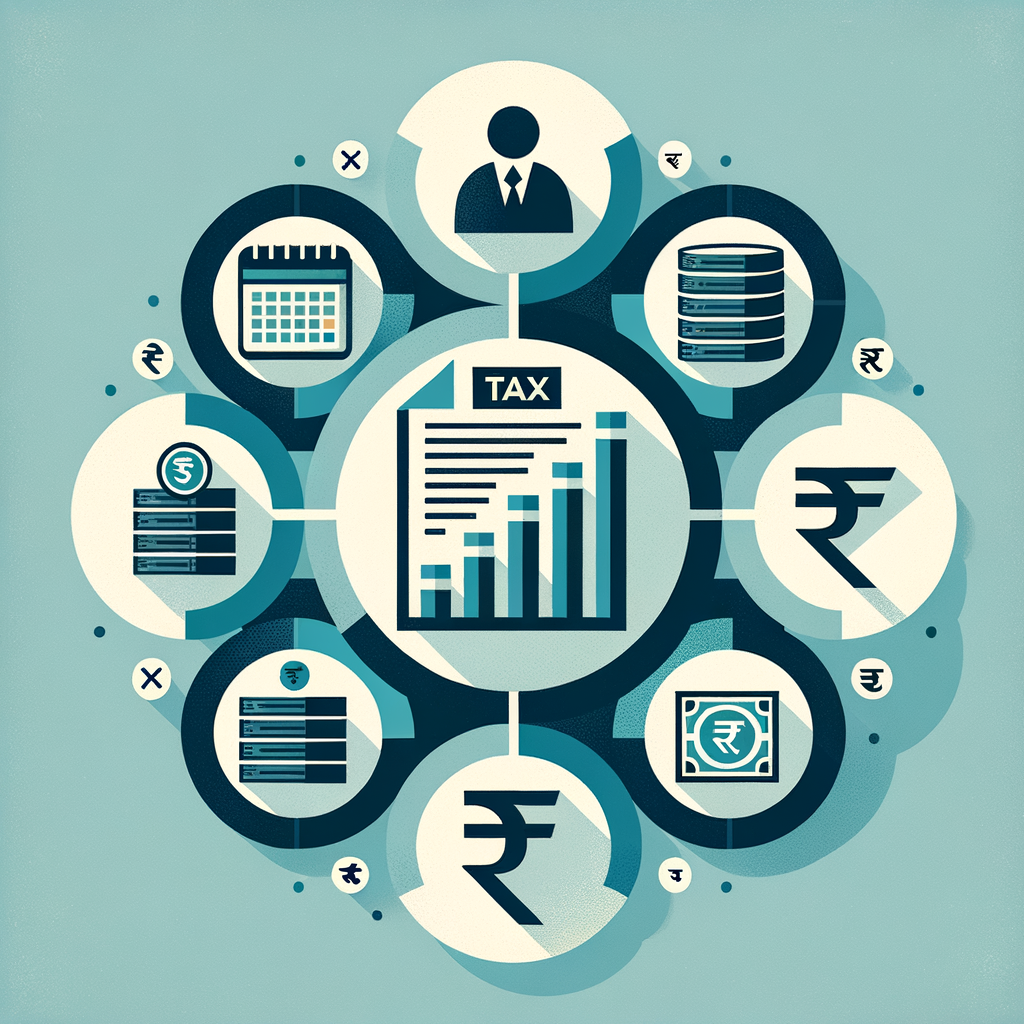What are the current income tax slabs for individual taxpayers? (For FY 2023-24 / AY 2024-25)
As the financial year comes to a close, understanding your tax liability becomes crucial for effective financial planning and compliance. For many, navigating the tax system can feel overwhelming, especially with the different rules and rates that apply. A core component of this system is the income tax slabs for individual taxpayers, which determine the rate at which your income is taxed. For the Financial Year 2023-24 (which corresponds to the Assessment Year 2024-25), the Indian government has provided taxpayers with a choice between two distinct tax regimes: the Old and the New. A significant update is that the New Tax Regime is now the default option for everyone. This comprehensive guide will simplify the current income tax slabs in India for both salaried individuals and small business owners, helping you understand both options and make an informed decision to optimize your tax savings.
Understanding India’s Two Tax Regimes: Old vs. New
The biggest choice an individual taxpayer has to make while filing their return is selecting between the Old and New Tax Regimes. The fundamental difference between them lies in the trade-off between lower tax rates and the ability to claim tax deductions and exemptions. Your financial habits, investment strategy, and major expenses like rent or home loan repayments will heavily influence which regime is more beneficial for you. Understanding this core difference is the first step toward smart tax planning. A detailed comparison in our guide, Old vs New Tax Regime: Which Is Better New Tax Regime Or Old Tax Regime For Salaried Employees?, can help you decide.
The Old Tax Regime
The Old Tax Regime is the traditional system that has been in place for many years. Its main characteristic is the wide array of deductions and exemptions it offers to taxpayers, which can significantly reduce their taxable income. This regime allows you to claim popular deductions under sections like Section 80C (for investments in PPF, ELSS, Life Insurance, etc., up to ₹1.5 lakh), Section 80D (for health insurance premiums), House Rent Allowance (HRA), and interest on home loans (Section 24). For individuals who make substantial investments and have expenses that qualify for these deductions, the Old Regime can often result in a lower tax liability, despite its seemingly higher tax rates.
The New Tax Regime (Default Regime for FY 2023-24)
Introduced to simplify the tax structure, the New Tax Regime offers lower, more attractive tax rates across different income brackets. However, this benefit comes at a cost: you must forgo most of the common deductions and exemptions available under the Old Regime. From FY 2023-24, this has been made the default individual taxpayer tax scheme 2023. This means if you do not actively choose the Old Regime when filing your taxes, you will be automatically taxed under the New Regime’s rules. This regime is designed for taxpayers who prefer a simpler tax-filing process without the need to track and claim numerous deductions.
The New Tax Regime: Updated Income Tax Slabs for Individual Taxpayers
For the Financial Year 2023-24, the New Tax Regime has been updated to be more appealing for taxpayers. The government has restructured the slabs and increased the basic exemption limit to encourage more people to adopt this simpler system. The 2023 income tax slabs in India under this default regime are designed to offer lower tax outgo for individuals with lower to moderate incomes who do not have significant deductions to claim. These current income tax rates for salaried individuals and other individual taxpayers are uniform, regardless of age.
Tax Rates for Individuals (below 60 years), Senior Citizens (60-80), Super Senior Citizens (80+), and HUF
Under the New Tax Regime, the income tax slabs are the same for all individual taxpayers, eliminating the different basic exemption limits that existed for senior and super senior citizens in the old system. The rates are as follows:
| Net Taxable Income | Tax Rate |
|---|---|
| Up to ₹3,00,000 | Nil |
| ₹3,00,001 to ₹6,00,000 | 5% |
| ₹6,00,001 to ₹9,00,000 | 10% |
| ₹9,00,001 to ₹12,00,000 | 15% |
| ₹12,00,001 to ₹15,00,000 | 20% |
| Above ₹15,00,000 | 30% |
Key Features and Benefits of the New Tax Regime
Beyond the simplified slab structure, the New Tax Regime for FY 2023-24 has some important features:
- Tax Rebate (Section 87A): A significant enhancement is the increased tax rebate. If your net taxable income is up to ₹7 lakh, you will have zero tax liability under this regime. This makes it highly attractive for individuals within this income bracket.
- Standard Deduction: To level the playing field for salaried individuals and pensioners, a standard deduction of ₹50,000 has been extended to the New Tax Regime. This was a major change from previous years and a welcome relief.
- Exemptions: It’s crucial to remember that this regime does not allow for most popular deductions. You cannot claim benefits for HRA, LTA, or deductions under Chapter VI-A, which includes Sections 80C, 80D, 80TTA, etc.
The Old Tax Regime: Tax Slab Structure for Individual Taxpayers
If you decide to opt out of the default New Regime, you will be taxed as per the tax slab structure for individual taxpayers India under the Old Regime. This regime is often preferred by those with high-value investments in tax-saving instruments, a home loan, and significant rental expenses. The income tax rates for individuals in India under this regime vary based on the taxpayer’s age category, offering a higher basic exemption limit for senior and super senior citizens.
Tax Slabs for Individuals (below 60 years) & HUF
For regular individual taxpayers and Hindu Undivided Families (HUF), the slab rates are:
| Net Taxable Income | Tax Rate |
|---|---|
| Up to ₹2,50,000 | Nil |
| ₹2,50,001 to ₹5,00,000 | 5% |
| ₹5,00,001 to ₹10,00,000 | 20% |
| Above ₹10,00,000 | 30% |
Tax Slabs for Senior Citizens (60 to 80 years)
Senior citizens enjoy a higher basic exemption limit, which provides them with some tax relief.
| Net Taxable Income | Tax Rate |
|---|---|
| Up to ₹3,00,000 | Nil |
| ₹3,00,001 to ₹5,00,000 | 5% |
| ₹5,00,001 to ₹10,00,000 | 20% |
| Above ₹10,00,000 | 30% |
Tax Slabs for Super Senior Citizens (above 80 years)
Super senior citizens receive the highest basic exemption limit under the old tax structure.
| Net Taxable Income | Tax Rate |
|---|---|
| Up to ₹5,00,000 | Nil |
| ₹5,00,001 to ₹10,00,000 | 20% |
| Above ₹10,00,000 | 30% |
Major Deductions You Can Claim Under the Old Regime
The primary advantage of the Old Regime is its vast scope for deductions. Some of the most common ones include:
- Section 80C: Up to ₹1.5 lakh for investments in PPF, ELSS, Life Insurance premiums, Sukanya Samriddhi Yojana, NSC, etc. To learn more about what qualifies, read our guide on Understanding Section 80C: Benefits and Investment Options.
- Section 80D: Deduction for health insurance premiums paid for self, family, and parents.
- House Rent Allowance (HRA): Salaried individuals living in rented accommodation can claim an exemption on the HRA component of their salary.
- Home Loan Interest (Section 24): Deduction of up to ₹2 lakh on the interest paid on a home loan for a self-occupied property.
Old vs. New Regime: How to Choose the Right One for You
Choosing between the two regimes is the most critical tax decision you will make this year. The right choice depends entirely on your personal financial situation, including your income level, investment habits, and expenses. A careful comparison of the income tax brackets for individuals in India under both systems is essential. To make it easier, here is a side-by-side comparison of the key features.
| Feature | New Regime (Default) | Old Regime |
|---|---|---|
| Tax Rates | Lower rates across multiple slabs | Higher rates with fewer slabs |
| Standard Deduction | Yes, ₹50,000 for salaried/pensioners | Yes, ₹50,000 for salaried/pensioners |
| Section 80C/80D | Not available | Available (up to specified limits) |
| HRA Exemption | Not available | Available |
| Home Loan Interest | Not available | Available (under Section 24) |
| Tax Rebate Limit | For income up to ₹7 lakh | For income up to ₹5 lakh |
As a simple rule of thumb, if your total eligible deductions are less than ₹1.5-2.5 lakhs, the New Regime is likely more beneficial for you. The lower tax rates and higher rebate limit will probably result in less tax payable. However, if you have high investments, a home loan, and other significant deductions that substantially exceed this amount, it is crucial to calculate your tax liability under both regimes before making a final decision. We highly recommend using a tax calculator to see a clear comparison.
You can use the official Income Tax Department tool to check your liability: Income Tax Department’s Tax Calculator.
Don’t Forget Surcharge and Cess
Beyond the basic slab rates, your final tax liability includes two additional components: Surcharge and Cess. These are applicable irrespective of the tax regime you choose. It’s important to factor these in for an accurate calculation of your total tax outgo, especially for those in higher income brackets.
Surcharge on Income Tax
A surcharge is an additional tax levied on top of the income tax for high-income earners. It is calculated as a percentage of the income tax payable if your net income exceeds certain thresholds. The rates are as follows:
- 10% of income tax, if total income is > ₹50 lakh and ≤ ₹1 crore
- 15% of income tax, if total income is > ₹1 crore and ≤ ₹2 crore
- 25% of income tax, if total income is > ₹2 crore and ≤ ₹5 crore
- 37% of income tax, if total income is > ₹5 crore
Note: A key benefit under the New Tax Regime is that the highest surcharge rate is capped at 25%, even for income above ₹5 crore. The 37% rate is applicable only under the Old Regime.
Health and Education Cess
A Health and Education Cess of 4% is levied on all taxpayers. This cess is calculated on the amount of income tax payable after including any applicable surcharge. The funds collected from this cess are used by the government to fund health and education initiatives across the country. This 4% charge is a mandatory addition to your final tax liability under both the Old and New Tax Regimes.
Conclusion
Navigating the tax landscape for FY 2023-24 requires a clear understanding of the two tax regimes available to you. The New Regime, now the default choice, offers simplicity and lower tax rates but sacrifices most deductions. The Old Regime, on the other hand, allows for extensive deductions and exemptions, which can be highly beneficial for individuals with significant investments and expenses. Re-emphasizing, choosing the right regime based on a careful evaluation of your financial situation is the key to optimizing your tax outgo. Ultimately, being well-informed about the income tax slabs for individual taxpayers is the first step towards better financial health, ensuring both compliance and potential savings. Once you’ve made your choice, follow our Step-by-Step Guide to Filing Income Tax Returns for Salaried Individuals in India to complete the process.
Choosing the right tax regime can be confusing. Let the experts at TaxRobo simplify your tax filing. Contact us today for personalized tax planning and ITR filing services!
Frequently Asked Questions (FAQs)
1. Which tax regime is better for salaried individuals in 2024?
The choice depends entirely on your deductions. If you have minimal deductions to claim (for instance, only the standard deduction of ₹50,000), the New Regime is often better due to its lower tax rates and higher tax rebate limit of ₹7 lakh. However, if you have significant deductions from House Rent Allowance (HRA), home loan interest (Section 24), and investments under Section 80C, the Old Regime might save you more tax. It is always best to calculate your tax liability under both regimes before making a decision.
2. Is tax filing mandatory if my income is below the taxable limit?
Generally, if your gross total income is below the basic exemption limit (e.g., ₹2.5 lakh in the Old Regime or ₹3 lakh in the New Regime), you are not required to file an Income Tax Return (ITR). However, there are exceptions. You might need to file an ITR to claim a tax refund (if TDS was deducted), carry forward losses to future years, or if you need proof of income for applying for a loan or a visa.
3. What is the due date for filing ITR for AY 2024-25?
For individual taxpayers whose accounts are not required to be audited (which includes most salaried individuals and small business owners), the due date for filing their Income Tax Return for the Assessment Year 2024-25 is July 31, 2024. It is always advisable to check the official portal for the latest updates and extensions. You can visit the Income Tax Department’s official website for any announcements.
4. Can a small business owner choose the New Tax Regime?
Yes, small business owners and professionals (who typically file ITR-3 or ITR-4) can opt for the New Tax Regime. It offers them the same simplified tax structure and lower rates. However, there is an important condition for them: unlike salaried individuals who can switch between regimes every year, business owners who opt for the New Regime can only switch back to the Old Regime once in their lifetime. After switching back, they cannot opt for the New Regime again.



